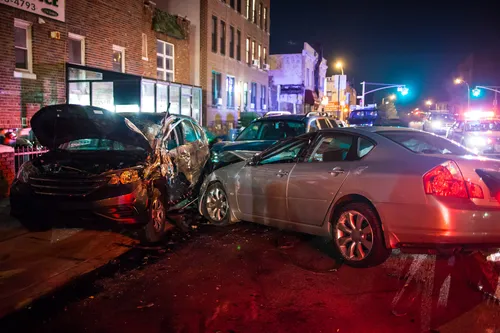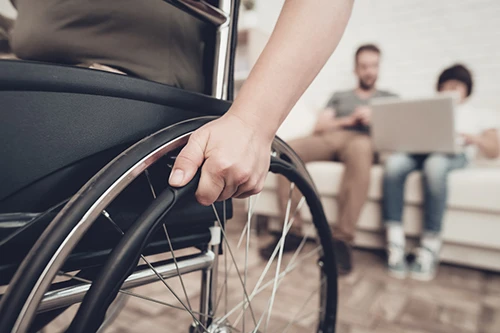2020 has been a difficult year for people, both children and adults. With the United States battling a COVID-19 pandemic right when the school year is beginning, parents may be uncertain of what their children or school will do in terms of curriculum and safety precautions.
Will their child be attending school in person, or will they learn online? What will they plan to do if remote learning is required for their child? In-person? How will transportation work? How will parents ensure their child’s safety?
There is uncertainty that arises during this time. After all, The New York Times reported that on July 30, 2020, a student who roamed the halls of their Junior High School in Indiana tested positive for the coronavirus just hours into the first day of school. However, there are measures you can take to help protect not only your children but also your other family members.
How to prepare for school in the middle of COVID-19
Below, you’ll find some advice on how to handle your child returning to school:
Read up on your child’s school’s guidelines. Understand what your school plans to do in the wake of the coronavirus. Will they enforce a mask policy? Distance-based learning?
Learn about your options. Find out if your child will be remote distance learning or in-person learning. Consider a free public online school, a private online school, or homeschooling (if applicable).
Be open and honest with your children. Lay out what is planning to happen at the beginning of the school year, what you know as well as what you don’t know regarding the current state of affairs. Encourage them to ask many questions about the pandemic during school.
Establish a routine. Schedule wake-up and bedtimes, when meals are, when work/homework is, and a winding down/fun/relaxation time.
Disconnect from all media. After school, try having your family disconnect from computers and phones and spend time together, whether that is eating together, playing a board game, walking on a trail together, or doing some form of exercise together. Time that would have been spent commuting to work or participating in extracurricular activities can now be spent together.
Constantly monitor your child’s temperature. If the temperature is 100.4 degrees or higher, do not send your child to school; instead, take them to get tested for coronavirus.
Watch for any symptoms of illness. COVID-19 symptoms include but are not limited to:
- Fever
- Dry cough
- Exhaustion
- Aches and pains
- Sore throat
- Diarrhea
- Headache
- Loss of taste or smell
- Rash on the skin or discoloration of fingers or toes
- Conjunctivitis
- Difficulty breathing
- Chest pain or pressure
- Loss of speech or movement
Find out where local COVID-19 testing sites are. Be prepared to immediately take your family to a COVID-19 testing site in case your child develops any symptoms of COVID-19.
Review with your child the proper handwashing technique. Everyone should wash their hands thoroughly for 20 seconds. Using a song like “Happy Birthday” and “The Wheels on the Bus” will help keep track of the seconds spent washing.
Pack your child a water bottle or two and discourage them from sharing their bottle or using the school’s drinking fountains. Drinking fountains may still be in use, depending on the policies at your child’s school.
Talk to your child about what precautions to take during school. Explain to them the importance of masks in their school and to follow the school’s safety protocols.
Plan to protect your family members who are considered at-risk. There is great risk of your child attending school — they could get and spread COVID-19 to your family members, who may include your elderly relatives. Ensure everyone is constantly washing their hands, maintaining proper hygiene, and socially distancing.
Ensure that all emergency information is current. Update any emergency contact information, home address, mailing address, and phone numbers if applicable.
Plan for any school closures. If COVID-19 runs widespread throughout the school, your school may shut down.
Prepare for your child’s transportation. If in-person schooling is required, consider driving your child to school, or, if the school is nearby and the child is age-appropriate, either suggest that the child walk or bike to school or walk or bike with the child.
Ask how special services for your child will be handled at the school. If your child has counseling, special education, or any similar service provided for them, find out the new protocol.
Be a role model for your child. Above all else, be a role model and show them the right steps to take in the middle of a pandemic.
Prepare yourself and stay safe
Know when it comes to your child and the safety of your family, that you have options. If you feel that public school is too risky for your family, then consider having your child take classes online or attend a smaller schooling group that properly socially distances and takes the necessary safety precautions.
If you feel that in-person public schooling is best for your child and yourself, arm yourself with knowledge of the school’s safety protocols. Prepare for your child’s transportation, pack your child water bottles (or even lunches!), and emphasize to your child the importance of washing your hands and being safe. If your child is showing signs of illness, take them immediately to a COVID-19 testing center.
But above all else, be a role model for your child. They need you more than ever in these uncertain times.



